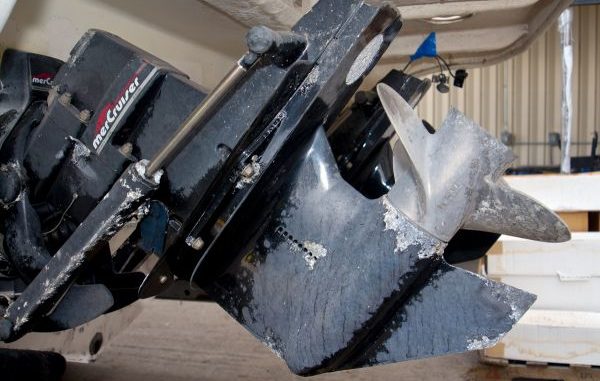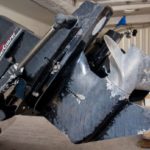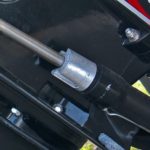
A little prevention goes a long way
Galvanic corrosion can make your boat engine’s lower unit look like you ordered the special zombie edition. Here’s why it happens and how you can prevent it.
My typical visit to a marina includes a walk down the docks to check out the boats moored in slips. If the marina includes a Fishing Guide Row, I spend most of my time there looking for innovative or unusual rigging that might lead to a story idea.
The most painful part of these walks is seeing galvanic cancer eating away at the lower units and props on some of the boats’ engines. Once it gets a toe-hold on an engine, it seems to grow exponentially — and the sad part is that it’s easy to prevent.
Corrosion is an electrochemical reaction that occurs between two different types of metal immersed in water, like your engine’s aluminum lower unit and stainless steel prop. You may remember putting two different metals in a beaker full of water in science class and noting the electric current it caused. This is the same thing, only more expensive.
The metal that has the most negative electrochemical potential (usually the aluminum lower-unit housing) becomes an anode giving off electrons and losing mass. The electric current moves to the less-reactive metal (usually steel), and it becomes the cathode.
In a moored boat, the reaction can be worse if there is stray current coming from your boat’s electrical system, from another boat in an adjacent slip or from a dock-side power leak.
The way we prevent our aluminum lower unit from shedding material and looking generally awful is to bolt on a chunk of metal that is even more willing to become zombiefied. This chunk of metal is referred to as a sacrificial anode because it sacrifices itself to save our more expensive engine parts.
These anodes come factory-installed on our outboard and inboard/outboard lower units, and they go silently about their business until they are eaten completely away because we forget to check them.
The anodes are silver-gray and, since they must be submerged along with the metal parts they protect in order to work, they are generally located somewhere around the cavitation plate. In fact, the anode on my Yamaha 115 serves as the steering trim tab on the plate’s bottom surface, right behind the prop.
Anodes are commonly made of magnesium, aluminum or zinc, and the best material for your boat depends on the type of water under it.
According to CMP Global, a supplier offering a broad array of anodes, zinc and aluminum alloys work best in saltwater. In brackish water, aluminum alloy is better because zinc’s efficiency decreases as water salinity is reduced. Freshwater boaters can’t use zinc at all: CMP warns that magnesium is the only metal alloy that will offer anode protection in freshwater.
Saltwater boaters using zinc have a few extra things to think about. CMP says that many zinc anodes contain small amounts of cadmium, a toxic heavy metal that is released into the water as the anode erodes away. Aluminum alloy anodes perform as well or better than zinc, contain nothing environmentally threatening, and have become competitively priced.
A walk down that marina dock will show you boats that are developing lower-unit cancer even though parts of their anodes are still in place. This tells me that the time to change them is when they are about 50 percent gone, not when their mounting bolts are all that’s left of them.
Anodes won’t last as long in saltwater or in any type of water where stray current exists.
Tilting a motor’s lower unit up out of the water for storage pulls both the anode and cathode metals out of the electrolyte, but around saltwater the humid salt air can still promote some corrosion.
If you’ve been ignoring the anode or anodes on your engine, take a close look at them. If you’re not comfortable with my general 50-percent rule, check with your engine’s manufacturer for specific advice.
Help stamp out lower-unit galvanic corrosion — it is one kind of cancer that can definitely be cured.




